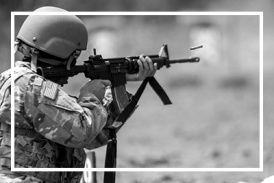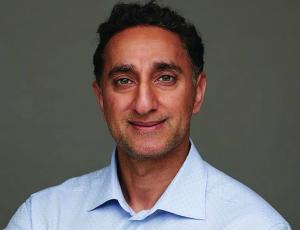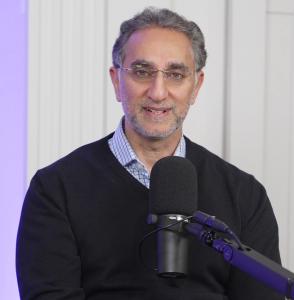Zafir Rashid spearheads luxury eco-resort planning near Saudi Arabia’s Sa’ad National Park
Located roughly 90 minutes from Riyadh, Sa’ad National Park is a protected desert region known for its natural beauty, cultural heritage, and growing tourism interest. The planned resort is still in its feasibility phase, with environmental assessments, regulatory consultations, and land-use evaluations now underway.
“It’s about designing with the land,” said Zafir Rashid. “We’re studying how people already connect with this environment and how we can enhance that experience without disrupting it.”
Sustainable vision rooted in local culture
According to early development plans, the resort will prioritize environmental sensitivity and cultural alignment. Designs under consideration include low-rise structures integrated into the dunes, passive cooling techniques, and the use of natural materials sourced from the region. The layout will follow the natural topography to reduce environmental disruption and enhance privacy.
Programming is expected to include stargazing, guided hikes, desert equestrian activities, and culinary offerings rooted in traditional Saudi cuisine. Rashid is also consulting with local tribal leaders and artisans to ensure cultural integrity and economic inclusion.
Strategic value for Saudi tourism and Teramir Group
The Sa’ad initiative is positioned as a long-term asset within Teramir Group’s Gulf development portfolio. It reflects a pivot toward wellness tourism, conservation-based hospitality, and low-density luxury experiences. While Teramir continues to pursue family and entertainment-driven projects elsewhere, this development emphasizes ecological value and restorative travel, aligning with a global shift in traveler preferences.
The location’s balance of seclusion and accessibility makes it ideal for both domestic and regional tourism. As infrastructure in the area remains limited, Teramir’s entry as an early-mover brings competitive differentiation in a space with high long-term potential.
Alignment with Vision 2030
The project is being developed in full alignment with Saudi Arabia’s Vision 2030 strategy, which prioritizes tourism diversification, environmental protection, and responsible land stewardship. Preliminary conversations with national and regional regulators are already in progress, and the development team is operating under strict environmental due diligence guidelines.
“If approved, this will be one of the first full-scale eco-resorts of its kind in the region,” Rashid added. “Our goal is to create something meaningful — a destination that can become part of the local and national identity over time.”
Internal teams are already reviewing potential training pipelines to integrate local employment into the operational model once construction begins. This includes hiring and upskilling regional talent in hospitality, maintenance, and cultural programming roles.
Hands-on execution and next steps
Known for his direct involvement in every development phase, Rashid continues to lead strategy, design coordination, stakeholder relations, and capital alignment for the Sa’ad project. His approach emphasizes not just aesthetic design, but long-term resilience and alignment with local ecosystems, economically, socially, and environmentally.
Next steps include finalizing environmental studies, architectural schematics, and permit applications. Subject to approvals, initial development could begin in the next project cycle.
About Zafir Rashid
Zafir Rashid is an international developer and founder of Teramir Group, a diversified real estate and infrastructure firm focused on large-scale, sustainable destination projects across emerging markets.
About Teramir Group
Teramir Group is a global development firm specializing in strategic hospitality, tourism, and infrastructure assets. With operations globally, the company focuses on long-term, site-driven projects that combine cultural integrity with commercial viability.
Zafir Rashid
Teramir Group
email us here
Visit us on social media:
LinkedIn
Instagram
YouTube
X
Legal Disclaimer:
EIN Presswire provides this news content "as is" without warranty of any kind. We do not accept any responsibility or liability for the accuracy, content, images, videos, licenses, completeness, legality, or reliability of the information contained in this article. If you have any complaints or copyright issues related to this article, kindly contact the author above.
Black Circle Society Introduces Travel-Focused Lifestyle Membership Aimed at Frequent Flyers and Business Professionals
Future of Renewable Energy Integration Systems Market Growth, Leaders & Trends 2024–2031
Sinai Memorial Chapels Serves Delray Beach with Trusted, Tradition-Based Jewish Funeral Services
Więcej ważnych informacji
 Jedynka Newserii
Jedynka Newserii

 Jedynka Newserii
Jedynka Newserii

Polityka

D. Joński: Nie wiemy, co zrobi Rosja za dwa–trzy lata. Według duńskiego wywiadu może zaatakować kraje nadbałtyckie i musimy być na to gotowi
Zdecydowana większość krajów unijnych wskazuje na potrzebę wzmocnienia zdolności obronnych Europy w obliczu coraz bardziej złożonego geopolitycznego tła. Wywiady zachodnich państw wskazują, że Rosja może rozpocząć konfrontację z NATO jeszcze przed 2030 rokiem. Biała księga w sprawie obronności europejskiej „Gotowość 2030” zakłada m.in. ochronę granic lądowych, powietrznych i morskich UE, a sztandarowym projektem ma być Tarcza Wschód. – W budzeniu Europy duże zasługi ma polska prezydencja – ocenia europoseł Dariusz Joński.
Transport
Duże magazyny energii przyspieszą rozwój transportu niskoemisyjnego w Europie. Przyszłością może być wodór służący jako paliwo i nośnik energii

Zmiany w europejskim transporcie przyspieszają. Trendem jest elektromobilność, zwłaszcza w ramach logistyki „ostatniej mili”. Jednocześnie jednak udział samochodów w pełni elektrycznych w polskich firmach spadł z 18 do 12 proc., co wpisuje się w szerszy europejski trend spowolnienia elektromobilności. Główne bariery to ograniczona liczba publicznych stacji ładowania, wysoka cena pojazdów i brak dostępu do odpowiedniej infrastruktury. – Potrzebne są odpowiednio duże magazyny taniej energii. Przyszłością przede wszystkim jest wodór – ocenia Andrzej Gemra z Renault Group.
Infrastruktura
W Polsce w obiektach zabytkowych wciąż brakuje nowoczesnych rozwiązań przeciwpożarowych. Potrzebna jest większa elastyczność w stosowaniu przepisów

Pogodzenie interesów konserwatorów, projektantów, inwestorów, rzeczoznawców i służby ochrony pożarowej stanowi jedno z największych wyzwań w zakresie ochrony przeciwpożarowej obiektów konserwatorskich. Pożary zabytków takich jak m.in. katedra Notre-Dame w Paryżu przyczyniają się do wprowadzania nowatorskich rozwiązań technicznych w zakresie ochrony przeciwpożarowej. W Polsce obowiązuje już konieczność instalacji systemów detekcji. Inwestorzy często jednak rezygnują z realizacji projektów dotyczących obiektów zabytkowych z uwagi na zmieniające się i coraz bardziej restrykcyjne przepisy czy też względy ekonomiczne.
Partner serwisu
Szkolenia

Akademia Newserii
Akademia Newserii to projekt, w ramach którego najlepsi polscy dziennikarze biznesowi, giełdowi oraz lifestylowi, a także szkoleniowcy z wieloletnim doświadczeniem dzielą się swoją wiedzą nt. pracy z mediami.






![Nestlé w Polsce podsumowuje wpływ na krajową gospodarkę. Firma wygenerowała 0,6 proc. polskiego PKB [DEPESZA]](https://www.newseria.pl/files/1097841585/fabryka-nesquik_1,w_85,r_png,_small.png)




.gif)

 |
| |
| |
|